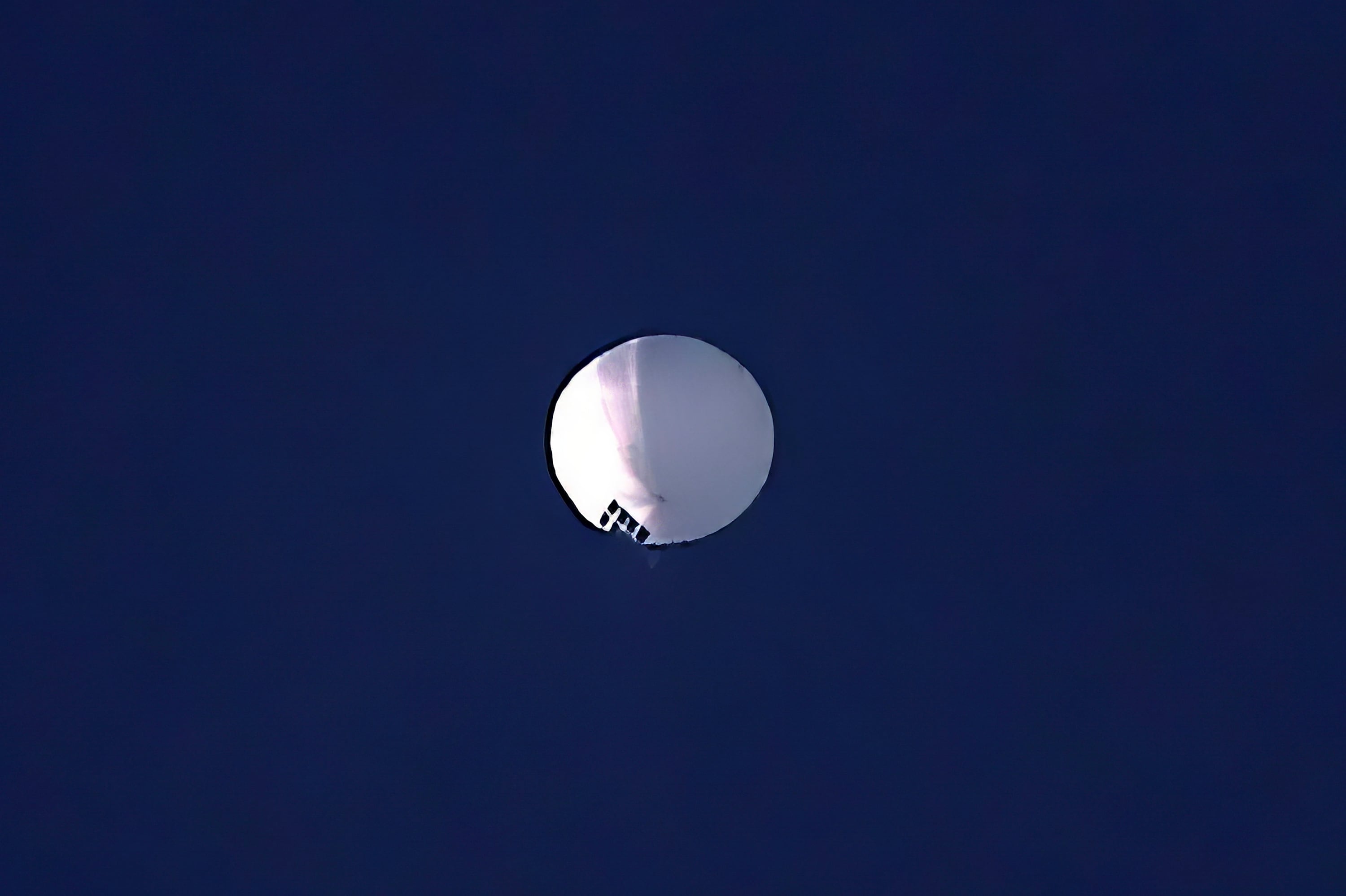The Chinese balloon shot down off the South Carolina coast was part of a large surveillance program that China has been conducting for “several years,” the Pentagon said Wednesday.
When similar balloons passed over U.S. territory on four occasions during the Trump and Biden administrations, the U.S. did not immediately identify them as Chinese surveillance balloons, said Brig. Gen. Pat Ryder, the Pentagon press secretary. But he said “subsequent intelligence analysis” allowed the U.S. to confirm they were part of a Chinese spying effort and learn “a lot more” about the program.
RELATED

He refused to provide any new details about those previous balloons. When pressed, Ryder would only say that the balloons flew over “sites that would be of interest to the Chinese.”
One of the possible incidents was last February.
Maj. Gen. Kenneth Hara, the adjutant general in Hawaii, tweeted about a balloon over Kauai a year ago. He said U.S. Indo-Pacific Command “detected a high-altitude object floating in air in the vicinity of the Hawaiian Islands” and sent up aircraft to intercept it. He said they visually confirmed it was an unmanned balloon with no identification markings.
Ryder declined to say whether this was one of the four previous incidents that the U.S. had discussed. Pacific Air Forces, the Air Force command in the Indo-Pacific, said that balloon was not shot down.
The recent balloon was shot down by a U.S. military fighter jet on Saturday. The Navy and Coast Guard are still working to recover pieces of the downed balloon so they can be analyzed.
China claims it was a civilian balloon used for meteorological research and sharply criticized the U.S. for shooting it down.
Ryder said North American Aerospace Defense Command began tracking the balloon as it approached U.S. airspace. It passed north of the Aleutian Islands on Jan. 28 and moved largely over land across Alaska and then into Canadian airspace before crossing back into the U.S. over northern Idaho on Jan. 31, U.S. officials have said.
RELATED

Top administration officials were briefing members of Congress on the Chinese balloon surveillance program in classified sessions on Wednesday and Thursday. Avril Haines, director of national intelligence; Deputy Secretary of State Wendy Sherman; Gen. Glen VanHerck, head of U.S. Northern Command; and Colin Kahl, the under secretary of defense for policy, were among those expected to brief lawmakers.
Secretary of State Antony Blinken said the U.S. has briefed dozens of countries on the program, which officials said has been active over five continents.
“The United States was not the only target,” he said at a news conference with visiting NATO chief Jens Stoltenberg. Blinken said he and Stoltenberg had spoken about the “systemic and tactical challenges” that China poses to the alliance and the importance of combatting them.
The foreign countries would include nations the U.S. believes have been surveilled in the past as well as NATO allies.
Those briefings were continuing Wednesday, and the State Department has sent a cable to all U.S. embassies and consulates outlining the administration’s case against China and instructing American diplomats to discuss these points with their host governments. However, the cable is less specific than what has been briefed to allies and partners.
Off the South Carolina coast, meanwhile, Navy divers began pulling pieces of the downed Chinese spy balloon from the depths of the ocean floor on Tuesday, using sophisticated reconnaissance drones dubbed the Kingfish and the Swordfish to locate the debris.
Ryder said agents from the FBI and the Naval Criminal Investigative Service are cataloguing the debris and transporting it for further processing.
Associated Press writer Matthew Lee contributed to this report.




